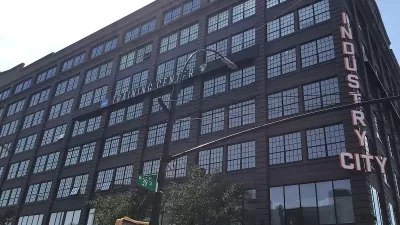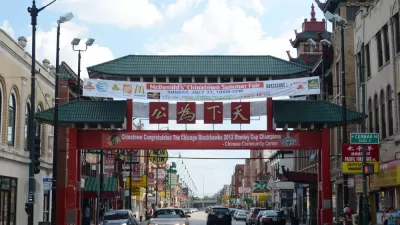The editors of a new book on displacement in New York argue that the city's historical record of exclusionary zoning carries over into the present. Urbanist concepts in vogue today simply rehash old divides.

"If were going to be a sanctuary city—that has to include being a place where people can afford to live." So argues Sylvia Morse, a NYC housing advocate and co-editor of Zoned Out! alongside planning professor Tom Angotti. In an interview, the two draw harsh conclusions about the city's housing and zoning policy.
Their argument: modern forms of inequality have systemic roots and need to be dealt with as such. "Zoning is a systemic policy to protect neighborhoods that are predominantly white and homeowner neighborhoods—the whiteness is more important than home ownership, actually. [...] If policies are not explicitly anti-racist, then they are perpetuating racism."
Moore and Angotti argue that many of today's urbanist buzzwords like "underutilized" land, transit-oriented development, mixed-use, and even "density" can mask profit- or even race-related displacement. Lacking a comprehensive plan, NYC's zoning remains a hyper-local affair, perpetuating these problems.
Says Morse, "We see a lot of that happening now, where if people are living in poverty, and if those people are people of color, their neighborhoods are immediately labeled as needing a certain kind of investment. Rather than that investment in social programs, that investment comes in the form of subsidies for developers that are going to make a ton of private profit."
FULL STORY: New York City Has Been Zoned to Segregate

Alabama: Trump Terminates Settlements for Black Communities Harmed By Raw Sewage
Trump deemed the landmark civil rights agreement “illegal DEI and environmental justice policy.”

Planetizen Federal Action Tracker
A weekly monitor of how Trump’s orders and actions are impacting planners and planning in America.

The 120 Year Old Tiny Home Villages That Sheltered San Francisco’s Earthquake Refugees
More than a century ago, San Francisco mobilized to house thousands of residents displaced by the 1906 earthquake. Could their strategy offer a model for the present?

In Both Crashes and Crime, Public Transportation is Far Safer than Driving
Contrary to popular assumptions, public transportation has far lower crash and crime rates than automobile travel. For safer communities, improve and encourage transit travel.

Report: Zoning Reforms Should Complement Nashville’s Ambitious Transit Plan
Without reform, restrictive zoning codes will limit the impact of the city’s planned transit expansion and could exclude some of the residents who depend on transit the most.

Judge Orders Release of Frozen IRA, IIJA Funding
The decision is a victory for environmental groups who charged that freezing funds for critical infrastructure and disaster response programs caused “real and irreparable harm” to communities.
Urban Design for Planners 1: Software Tools
This six-course series explores essential urban design concepts using open source software and equips planners with the tools they need to participate fully in the urban design process.
Planning for Universal Design
Learn the tools for implementing Universal Design in planning regulations.
Clanton & Associates, Inc.
Jessamine County Fiscal Court
Institute for Housing and Urban Development Studies (IHS)
City of Grandview
Harvard GSD Executive Education
Toledo-Lucas County Plan Commissions
Salt Lake City
NYU Wagner Graduate School of Public Service





























